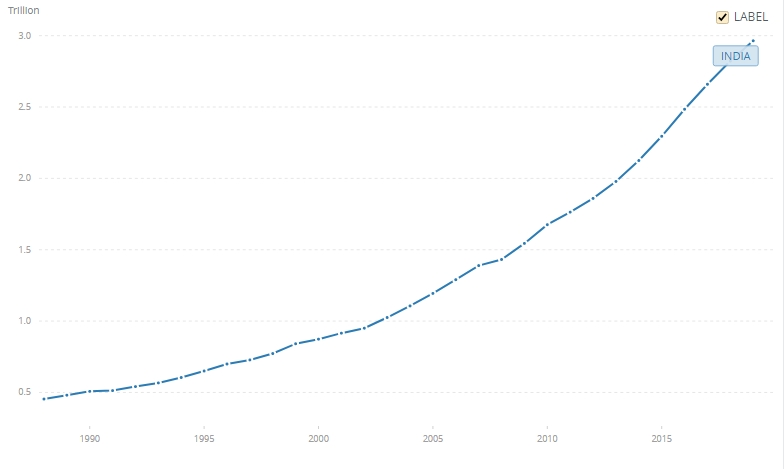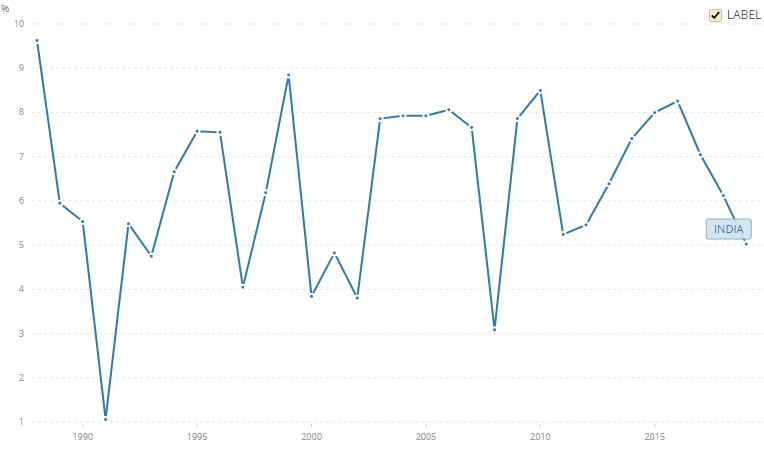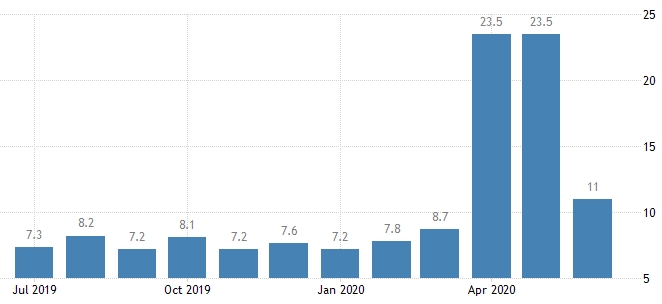Introduction
India is the second most populous country in the world after China. Its population surpasses 1.3 billion, making it the largest democracy (BBC, 2019). Its area is over 3 million square kilometres, and major religions are Hinduism, Islam, Christianity, Sikhism, Buddhism (BBC, 2019). India is a country of controversies, as it is a home of the oldest tradition, such as caste system and arranged marriages, and the latest innovation, which can be noticed in Bangalore, a hub for the international software development business. India belongs to the BRICS (Brazil, Russia, India, China, and South Africa) countries, which are a group of developing economies which are expected to become leading suppliers of manufactured goods, services, and raw materials in the world (Majaski, 2020). The present report provides a concise macroeconomic overview and discussion of employment rates in the country to establish trends in GDP and employment.
Explanation of Topics
Macroeconomics is a complex subject that includes several aspects. Typical topics of macroeconomics include a brief macroeconomic overview, inflation and interest rates, currency and foreign exchange, international trade, employment rates, fiscal policy, monetary policy, and supply-side policy. First, the present paper will focus on macroeconomic overview, which includes observation of market size measured in the gross domestic product (GDP), recent developments in key economic measures, and government initiatives. This aspect of macroeconomics helps to acquire an overall understanding of the level of economic development of a country. Second, the paper provides a discussion of the unemployment rate, which is a percentage of unemployed workers in the total labour force. The analysis of this topic helps to understand how well a country uses its human resources to achieve economic prosperity.
Factors Affecting Macroeconomics
Macroeconomics in India is affected by a myriad of factors, both economic and non-economic. The central influencers of GDP growth in India are labour resources and natural resources (Sethy, 2018). Currently, India builds its economic growth on the production of manufactured goods, which requires an abundance of natural resources and cheap low-skilled workforce (Sethy, 2018). Cheap labour also led to an influx of international investments that favour economic development (Sethy, 2018). The occupational structure of India shifted since the 1990s, and the percentage of people employed in the agricultural sector decreased considerable, which also positively affects economic growth (Sethy, 2018). Finally, economic development in India was supported by technological advancement that made production more efficient (Sethy, 2018).
While economic factors are crucial for all aspects of macroeconomics, there are also non-economic factors that should be considered. First, in recent years the government’s strategic planning also positively affected economic development through efficient policy implementation (Sethy, 2018). Second, the level of education has increased considerably during the last two decades, which positively affected the creation of human capital (Sethy, 2018). Third, recently, the social structure of India has taken a step away from the caste system to social equality and mobility (Sethy, 2018). Finally, the Indian government is continuously increasing dedication to the proper maintenance of law and order, which improves stability in the country and raises morality, initiative, and entrepreneurship (Sethy, 2018). In summary, both the internal and external environment supported the economic development of India in recent years.
Discussion and Analysis of Trends
Macroeconomic Overview
India has been a stable performer in terms of GDP for over 50 years. According to the World Bank (2020b), the GDP of the country grew from $453 billion in 1988 to almost $3 trillion in 2019. The graph of GDP trends is demonstrated in Figure 1 below. According to the chart, the country has not experienced a decrease in GDP since 1988.

While India’s GDP increases every year, the stability of the growth is questionable. According to Figure 2 below, India’s GDP growth experienced several rises and falls during the past three decades. The changes were mostly associated with changes in the external environment, such as the economic crisis of 2008 (World Bank, 2020a).

In terms of recent developments, there have been significant investments across various sectors of the Indian economy. For instance, merger and acquisition activity reached $28 billion, while private equity deals grew to $48 billion (India Brand Equity Foundation [IBEF], 2020). The combined index of eight core industries grew by 0.6%, reaching 137 in 2019 (IBEF, 2020). Indian companies raised almost $2.5 billion in IPOs during the previous year, making India the third largest startup base in the world (IBEF, 2020). Moreover, in 2019, India went up 14 ranks in World Bank’s Doing Business Report reaching the 64th spot (IBEF). In general, recent developments were favourable for the Indian economy.
As for government initiatives, the Indian government suggested several measures aimed at improving the overall wealth and well-being of citizens. For instance, The Prime Minister of India, Mr Narendra Modi, announced several economical packages worth 10% of Indian GDP to support the business that suffered during the COVID-19 pandemic (IBEF, 2019). The government invested more than $2 billion to construct 3,31,075 houses (IBEF, 2019). Finally, the government decided to increase spending on healthcare by 2.5% (IBEF, 2019). In brief, all the recent measures implemented by the government were dictated by the coronavirus outbreak.
Unemployment
The unemployment rate in India differs depending on the source of information. According to the World Bank (2020c), the unemployment rate in India was relatively stable, varying between 4.3% and 5.7% during the past three decades. However, according to Trading Economics (2020), the unemployment rate in India was more diverse, especially after the COVID-19 outbreak (see Figure 3). Before the pandemic, the unemployment rate was around 7.5%; however, after the quarantine measures were implemented, unemployment grew to 23.5% (Trading Economics, 2020). Even though the unemployment rate decreased to 11%, it is not expected to return to the previous year’s level until August 2021 (Trading Economics, 2020).

Conclusion and Recommendations
The present report demonstrates that overall India showed a stable growth of the economy for the past three decades interrupted only by unfavourable international events, such as the 2008 economic crisis. However, currently, the country is experiencing economic decline due to the COVID-19 pandemic. Therefore, the government needs to design and implement a package of short-term measures to help the economy stabilize. After that, the country should focus on learn-term development strategy consisting of three parts. First, the government needs to take a step away from exploiting natural resources and turn to sustainable development initiatives. Second, India needs to continue to create high-skilled jobs to become more competitive in knowledge-economy. Finally, society needs to move to equality to reduce unemployment, as many women in the country do not have jobs.
Reference List
BBC (2019). India country profile. Web.
India Brand Equity Foundation (2020) About Indian economy growth rate and statistics. Web.
Majaski, C. (2020) Brazil, Russia, India, and China (BRIC). Web.
Sethy, V. (2018) Factors determining economic development in India. Web.
Trading Economics (2020) India unemployment rate. Web.
World Bank (2020a) GDP growth (annual %) – India. Web.
World Bank (2020b) GDP (constant 2010 US$) – India. Web.
World Bank (2020c) Unemployment, total – India. Web.